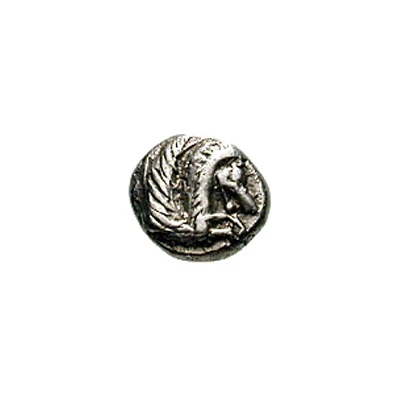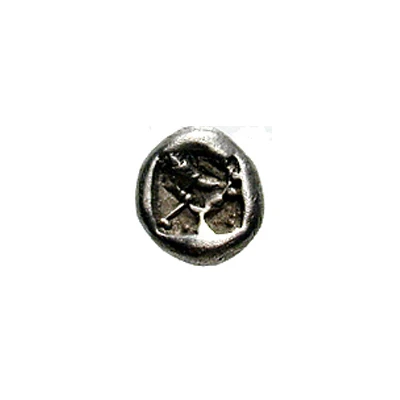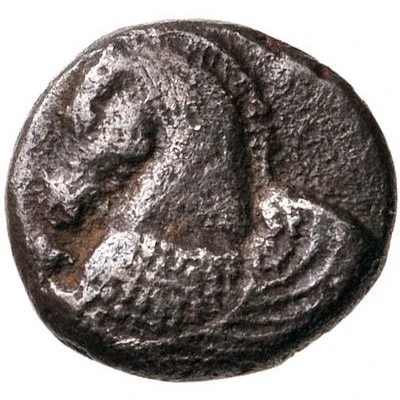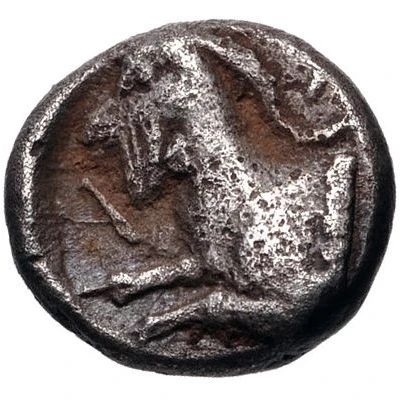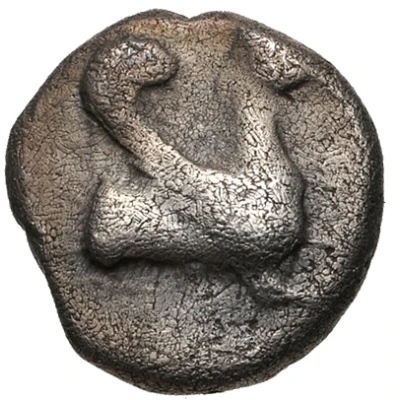
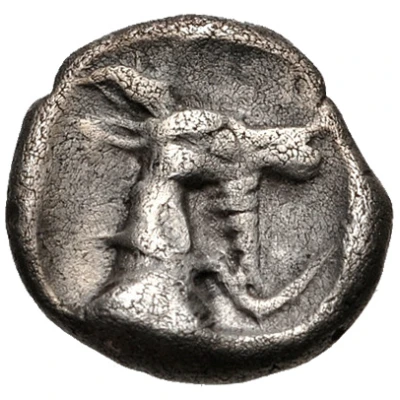

© Classical Numismatic Group, Inc.
Obol 460 BC - 450 BC
| Silver | 0.71 g | 8.0 mm |
| Issuer | Halikarnassos (Caria) |
|---|---|
| Type | Standard circulation coin |
| Years | 460 BC - 450 BC |
| Value | Obol (⅙) |
| Currency | Drachm |
| Composition | Silver |
| Weight | 0.71 g |
| Diameter | 8.0 mm |
| Shape | Round (irregular) |
| Technique | Hammered, Incuse |
| Orientation | Variable alignment ↺ |
| Demonetized | Yes |
| Updated | 2024-10-09 |
| Numista | N#147387 |
|---|---|
| Rarity index | 97% |
Reverse
Head of goat facing right within incuse square
Interesting fact
The Obol coin was used as a form of currency in ancient Greece, specifically in the city of Halikarnassos (now known as Bodrum, Turkey) during the 5th century BC. The coin features an image of a lion's head on one side and an incuse square on the other. The lion's head symbolized the city's patron deity, Apollo, while the incuse square represented the city's connection to the Persian Empire. The coin was made of silver and weighed approximately 0.71 grams. Despite its small size, the Obol coin played an important role in the ancient Greek economy, serving as a medium of exchange for everyday transactions.
Price
| Date | Mintage | VG | F | VF | XF | AU | UNC |
|---|---|---|---|---|---|---|---|
| ND (460 BC - 450 BC) | - | - | - | - | - | - |
Values in the table are based on evaluations by sales realized on Internet platforms. They serve as an indication only for Obol (460 BC - 450 BC) coin.
